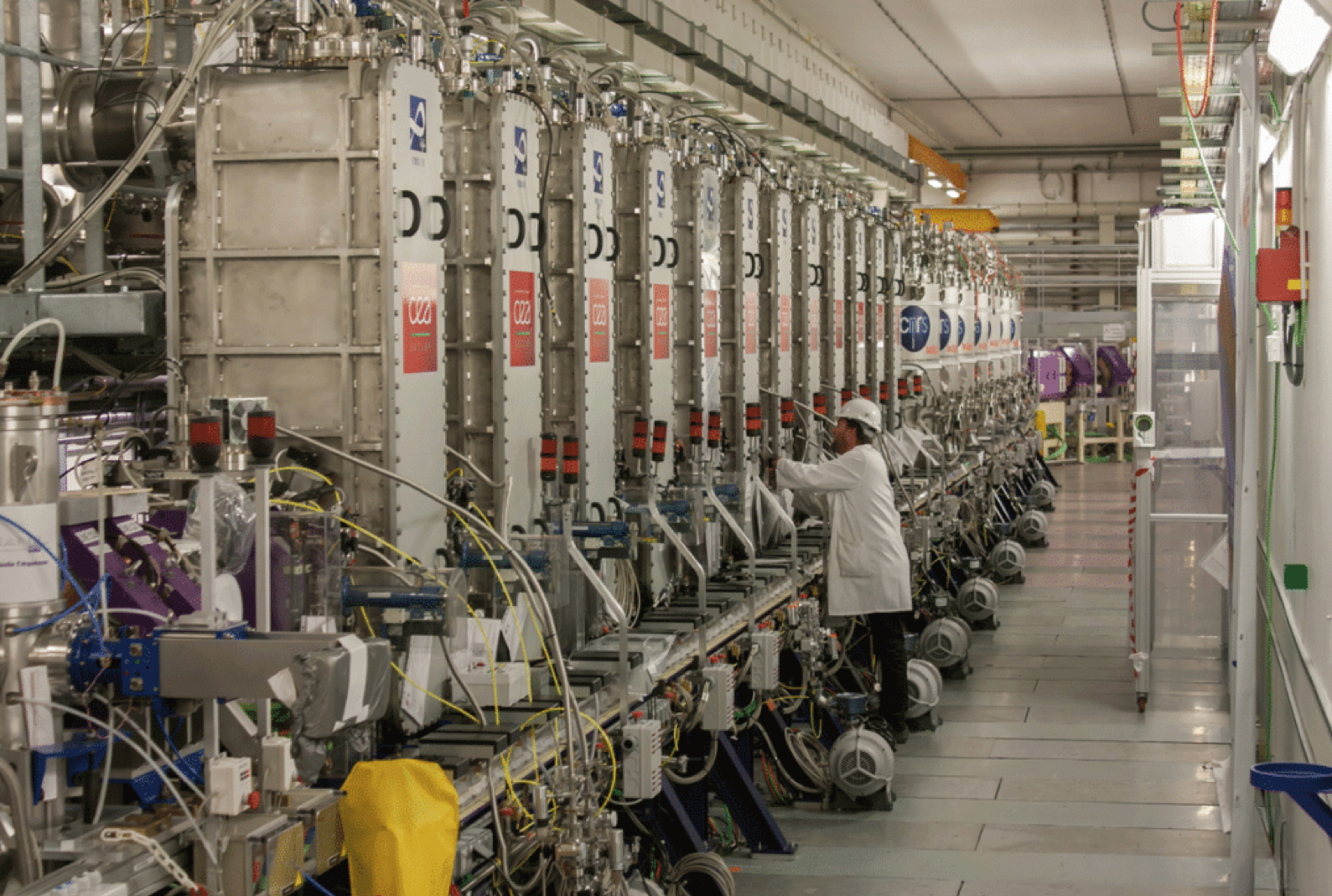The Great National Heavy Ion Accelerator (GANIL) in Caen is one of the largest international research laboratories studying the physics of the nucleus, the atom and condensed matter. It consists mainly of (i) an injector source of charged particles, (ii) elements that produce a magnetic field to focus the trajectory of the particles, and (iii) elements that produce an electric field to accelerate the particles. As the slightest fluctuation of the electric field causes losses of particles, it is essential to control the temperature and pressure in the acceleration part very precisely in order to obtain the most stable electric field possible.
Commissioning of LINAC, the new superconducting linear accelerator (Picture), continues apace at GANIL, in SPIRAL 2 (2
nd generation On-line Radioactive Ion Production System). In LINAC, a beam acceleration is provided by 26 cavities that generate a radiofrequency electric field to increase proton energy. These cavities are cooled to 4.5 K in baths of liquid helium in order to use the superconducting properties of their material and considerably minimize thermal dissipation caused by the interaction of the particles with the intense electric field.
Since these cavities are very sensitive to helium pressure variations, IRIG researchers have developed a numerical model of the cryogenic system to ensure helium pressure stabilization using an intelligent LQ (
Linear Quadratic) type regulator. This type of regulator provides better performance than a conventional PID (
Proportional, Integral, Derivative) regulator. The modeling used for this regulation is based on programming tools specifically developed by the IRIG researchers over the last ten years, under the title Simcryogenics. These tools allow to obtain a simplified model to regulate the pressure of the cavity and the level of the helium bath. Modeling also provides a better understanding of physical phenomena and thus allows better control and detection of possible anomalies.
Optimization work continues with the GANIL in order to improve the modeling and obtain an even more efficient regulation. This multidisciplinary collaboration is making a significant contribution to the final power increase of 200 kW for the new LINAC.

View of the linear accelerator of SPIRAL2 showing the different cryomodules, of which twelve were designed by CEA, and seven by CNRS.
© P.Stroppa CEA
This result is the outcome of a collaboration between DSBT and IRFU/GANIL.
The Grand accélérateur national d'ions lourds, or GANIL, (Great National Heavy Ion Accelerator) is an Economic Interest Grouping (GIE) created by two research organisms associated in equal parts for its construction and operation: the CEA and the CNRS. The CEA staff is affiliated with the IRFU/GANIL department.
IRFU: Institut de recherche sur les lois fondamentales de l’Univers (Institute for Research on the Fundamental Laws of the Universe).